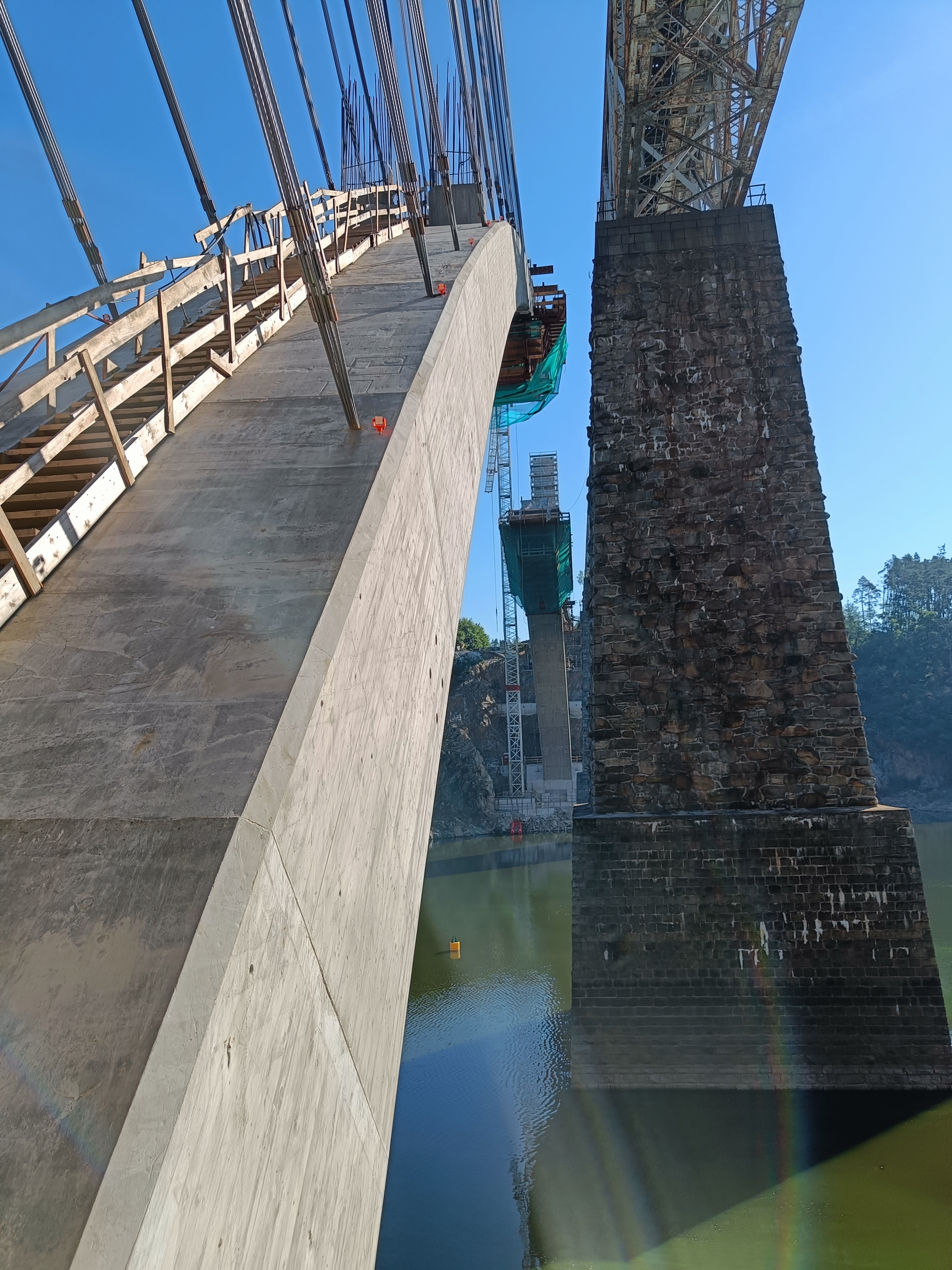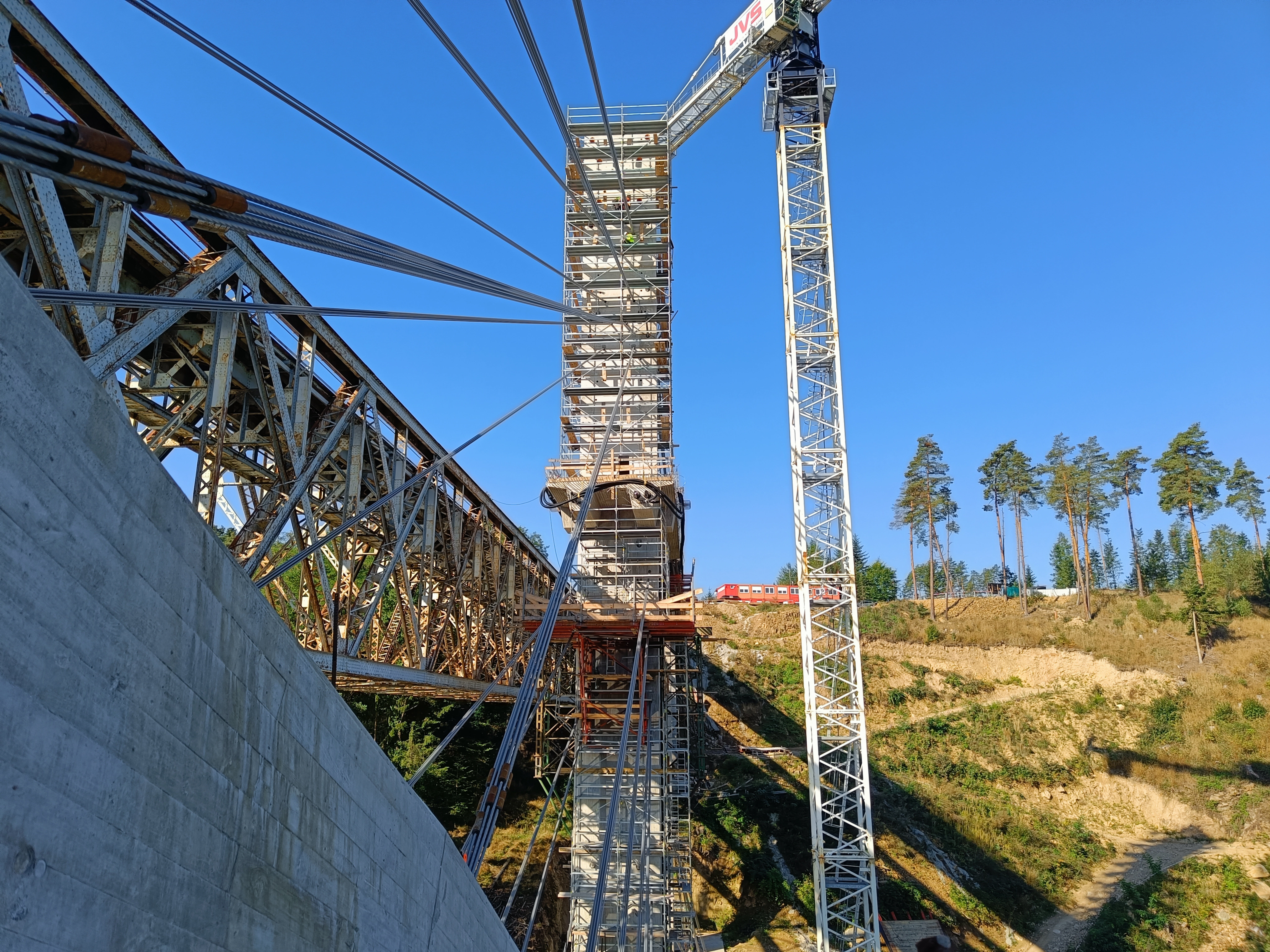The Arch Railway Bridge
About the project
The new bridge replaces the already insufficient steel bridge due to the modernization of the railway line. The bridge is located on km 41.791 of the Tabor–Pisek railway line near the village of Jetetice, Czech Republic.
The designed structure is a classic concrete arch deck bridge, also known as a spandrel arch. The total length of the bridge is 316.3 m. The 12-span concrete deck is supported by a concrete arch, piers, and abutments. The span of the arch is 156 m and the rise is 34.7 m. The loads are transferred from the deck through the arch crown and columns to the arch rib integrated into the ground.
Arches are highly efficient structures with the ability to carry high loads, primarily due to their shape. Also, as is the case of The Arch Railway Bridge, Jetetice, they are a suitable solution when taking into consideration the character of the landscape (where it is necessary to cross over a deep valley and a water obstacle).
The arch was constructed as a suspended cantilever using temporary cable stays. The existing bridge has been preserved. Its preservation as an existing landmark or possible demolition is yet to be decided.
Engineering challenges
The construction method (a suspended cantilever using temporary cable stays) required a large number of construction phases, specifically about 130 phases for this project. This was directly related to the amount of data and, therefore, to the computational time. This is a typical problem for projects of this scale.
The engineering team also had to deal with other challenging tasks, such as the verification of the stay cables' effectiveness through geometrically nonlinear calculation, a second-order problem for slender piers through linear buckling analysis, and a nonlinear calculation for additional internal forces' evaluation.
Solutions and results
We asked the designer responsible to describe the workflow.
The small team started by designing the shape of the arch to determine the main dimensions of the bridge. It was an iterative process until the preliminary design passed. The bridge was first comprehensively analyzed and verified in FEA software (MIDAS Civil), including all its structural phases. Then, it was necessary to focus on the critical members, designing the reinforcement and assessments. That's the moment in the process for IDEA StatiCa.
In SUDOP PRAHA, they have been using IDEA StatiCa for over ten years, and this brings them a high level of expertise in using the applications. So, it was easy for the team to make the most of the software.

Czech Republic
After analyzing all stages in the FEA software (MIDAS Civil), they chose an extreme combination of ULS, SLS, and a critical section of the arch. Using BIM linking, they imported this selected part into IDEA StatiCa BIM straight from MIDAS. Internal forces no longer had to be entered manually, and, at the same time, only the critical section and extremes needed to be used for reinforcement design. This reduced the amount of data and the computation time to a minimum.

Czech Republic
Another great advantage of IDEA StatiCa was its ability to create general cross-sections that would have otherwise been difficult to calculate by hand, especially their cross-sectional characteristics. See below the outputs from IDEA StatiCa RCS in which the arch box and the piers were code-checked.
Among other things, the results from the software were clearly readable in graphical form, and, thanks to this, the team had good control over the project, which led to design security.
About SUDOP PRAHA
SUDOP PRAHA a.s. is a project, consulting, and engineering company specializing in comprehensive solutions to transportation infrastructure issues, especially railway constructions, road and motorway constructions, and metropolitan mass transportation systems.
SUDOP PRAHA designs not only comprehensive technical solutions for structures, including bridges, tunnels and engineering facilities, communication and safety systems, electrification, and the power supply, but it also solves questions of traffic control and organization, traffic and car technologies, repair bases, logistics, tariff policy, transportation economy and financing, and the environmental impact of structures.
The firm won the Large Scale Projects: Concrete category in the IDEA StatiCa Excellence Awards 2023.
Încercați IDEA StatiCa gratuit










